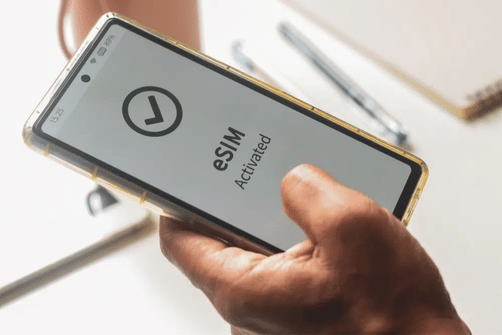Amid the surge in mobile connectivity, the eSIM market—that is, digital SIMs embedded directly in devices—is reaching record adoption levels. According to the latest report by Market Research Future, the market is projected to hit USD 5.77 billion by 2030, with annual growth of 31.4% between 2024 and 2030. This growth is faster than that of most competing mobile technologies, fueled by demand for seamless connectivity across key sectors:
- Automotive (connected and autonomous vehicles)
- Internet of Things (IoT)
- Multi-network mobile devices
- Travel and global roaming
The exponential growth of the eSIM market
Beyond the USD 5.77 billion projected by Market Research Future, other studies—such as The Insight Partners, cited by OpenPR—paint an even more optimistic picture: up to USD 17.98 billion by 2031, with a CAGR of 18.7% between 2024 and 2031.
This growth is driven by several structural factors:
- Elimination of physical SIM chips, enabling more compact and sustainable device designs
- The ability to switch carriers without physically removing a SIM
- Remote management of SIM profiles across globally distributed devices
- Wide-scale adoption of eSIM by Apple, Samsung, Xiaomi, and automotive manufacturers
The report also highlights sustained demand in regions such as North America, Europe, and Asia-Pacific, where 5G deployment and industrial digitization are acting as catalysts.
Where are the opportunities for new businesses?
The current landscape is fertile ground for innovation. According to an analysis by Tech in Asia, there are numerous opportunities for startups and developers within the eSIM ecosystem.
1. Management and provisioning platforms
The backend infrastructure of eSIM remains complex for many manufacturers. This creates openings for B2B solutions that help companies manage multiple eSIM profiles—whether for device fleets, smartwatches, or industrial sensors.
2. Operator aggregators and global marketplaces
Services like Holafly, Airalo, and Truphone have shown that there’s a clear demand for regional or global connectivity through a single app. New players could carve out niches in travel, logistics, security, education, or healthcare.
3. Vertical IoT solutions
Startups working with sensors, asset tracking, smart agriculture, or transport can integrate eSIM into their products, offering global plug-and-play connectivity.
4. AI integration and data analytics
The ability to analyze usage and connectivity patterns predictively opens doors in fields like network optimization, fraud detection, and predictive maintenance.
Who are the current leaders in the eSIM market?
Although the ecosystem is still expanding, several players have already emerged as market leaders:
- Chip manufacturers: Qualcomm, STMicroelectronics, NXP
- Mobile operators: AT&T, Vodafone, Telefónica, Deutsche Telekom
- Digital connectivity providers: BICS, Thales, IDEMIA
- eSIM providers for travelers: Holafly, Airalo, Nomad, Truphone
Many of these companies are working alongside OEMs, IoT developers, and provisioning platforms to scale their solutions to millions of devices.
eSIM is on track to become ubiquitous
The move from eSIMs in smartphones to cars, routers, smartwatches, or GPS trackers is only the beginning. As technical barriers fade and regulation advances, eSIM is cementing its role as a core component of our digital future.
Companies of all sizes now have the opportunity to harness this technology—whether they build the hardware, develop the platform, create the software, or shape the user experience.
Sources
- OpenPR
- Yahoo! Finance
- Tech in Asia










